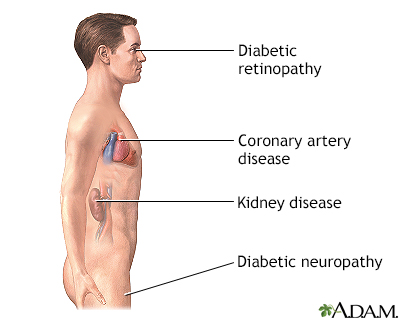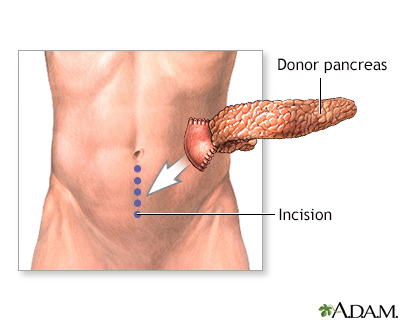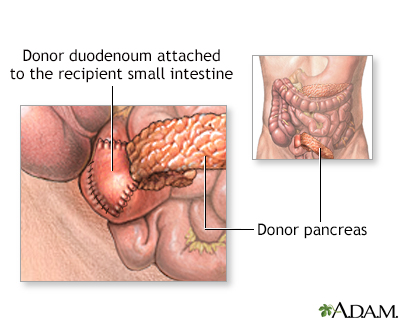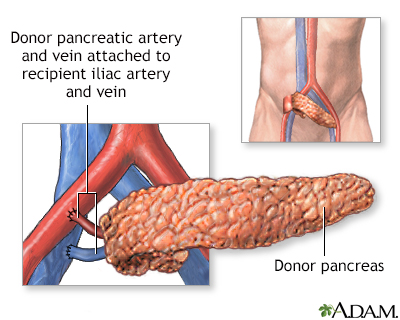Health exams for: #AGEGROUP#
The following exams, tests, and procedures are recommended for #AGEGROUPLOWER#.#FEMALETEXT#
Select a link from the list below to learn how and why each test is performed, as well how to prepare for it.

The following exams, tests, and procedures are recommended for #AGEGROUPLOWER#.#FEMALETEXT#
Select a link from the list below to learn how and why each test is performed, as well how to prepare for it.






The pancreas resides in the back of the abdomen. It functions to produce digestive enzymes which are delivered to the small intestine (duodenum) and various hormones, which are delivered to the bloodstream. One of the most important hormones produced by the pancreas is insulin. Insulin is produced by specialized cells of the pancreas called islets of Langerhans. Insulin regulates blood sugar levels.
The pancreas resides in the back of the abdomen. It functions to produce digestive enzymes which are delivered to the small intestine (duodenum) and ...
One of the most common diseases which affects the pancreas is insulin dependent diabetes, or type 1 diabetes. Type 1 diabetes is the result of an autoimmune attack on the islet cells which produce insulin. The resultant lack of insulin leads to excess blood sugar levels in the blood and a variety of health problems including visual disturbances (diabetic retinopathy), heart disease, nerve disorders (diabetic neuropathy), and kidney disease (diabetic nephropathy). Diabetic patients must take insulin everyday.
One of the most common diseases which affects the pancreas is insulin dependent diabetes, or type 1 diabetes. Type 1 diabetes is the result of an aut...
Pancreas transplant is a procedure in which a donor pancreas, obtained from a brain-dead organ donor who is maintained on life support, is surgically implanted into a diabetic patient. This operation is most often done in combination with kidney transplant in a patient who have diabetes and kidney failure as a result of their diabetes. The recipient's own diseased pancreas is left in place and the donor pancreas transplanted through a midline abdominal incision.
Pancreas transplant is a procedure in which a donor pancreas, obtained from a brain-dead organ donor who is maintained on life support, is surgically...
The donor duodenum, which remains attached to the donor pancreas, is attached to the recipient's small bowel to allow the digestive enzymes produced by the donor pancreas to drain into the small intestine.
The donor duodenum, which remains attached to the donor pancreas, is attached to the recipient's small bowel to allow the digestive enzymes produced ...
The vessels of the donor pancreas are attached to the vessels in the groin that supply the leg.
The vessels of the donor pancreas are attached to the vessels in the groin that supply the leg.
Attempts have been made to isolate only the insulin producing islets from the donor pancreas and infuse these islets directly into the bloodstream of diabetic patients, where they would lodge in the tissues and produce insulin. While still an experimental procedure, islet transplantation may someday offer a treatment for diabetes that, unlike pancreas transplant, does not require a major surgery.
Attempts have been made to isolate only the insulin producing islets from the donor pancreas and infuse these islets directly into the bloodstream of...
Review Date: 9/9/2023
Reviewed By: Debra G. Wechter, MD, FACS, General Surgery Practice Specializing in Breast Cancer, Virginia Mason Medical Center, Seattle, WA. Also reviewed by David C. Dugdale, MD, Medical Director, Brenda Conaway, Editorial Director, and the A.D.A.M. Editorial team.



